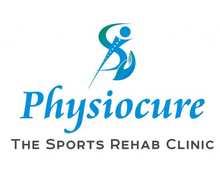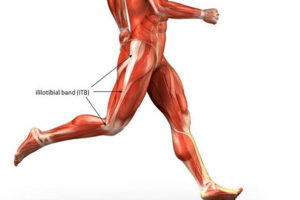Professional athletes and well-researched fitness guys resort to foam rolling regularly to keep all kinds of sports injuries at bay
Foam rolling describes a form of self-massage that uses body weight in conjunction with a device such as a foam roller or roller massager to apply pressure to tight tissues. This is done in order to increase myofascial compliance and optimize muscle length-tension relationships.
research says that muscles in our body tend to develop tightness due to minute trauma within the muscles due to an injury or heavy workouts which can develop scars. this can overtime affect your game or workout program leading to musculoskeletal injuries, hence foam rolling after your workout or game is a good practice you must put on!!
This myofascial tightness develops over time as a result of muscular microtrauma or after acute injury, both of which lead to scarring or thickening of the fascia. Scarring, in turn, contributes to reduced range of movement (ROM); neuromuscular dysfunction; joint, nerve, and vascular compression; reductions in strength; and pain and injury – all of which negatively affect physical performance
Another benefit of foam rolling is that it improves the communication between the muscular and neural systems to optimize neuromuscular function.
Not only that, foam rolling has a positive effect on arterial function- in terms of reduced tone, improved blood flow
More and more athletes and coaches are using manual therapy in the form of SMR or foam rolling as an easy and cost-effective way to achieve this aim (Schroder and Best, 2015).
Fascia is made primarily of densely packed collagen fibers that permeate your muscles, bones, nerves, blood vessels and organs.
There isn’t a place in your body where fascia doesn’t exist.
When fascia becomes restricted, adhesions form causing soreness, restricted movement, gait change, and potential injury.
For example, tight fascia around your IT band can cause your IT Band Syndrome, meaning your knee cap will track incorrectly.
If you loosen the muscles around your IT band, your knee cap begins tracking correctly and your knee stops hurting.
check out this video of how to do these 9 foam roll moves
Foam rolling is also helpful if you are recovering from certain sports injuries like an ACL tear, Hamstrings strain, Quadriceps strain, TA tendinopathy, calf muscle strain, shin splints, groin strain, and many more. to learn about the foam rolling benefits for these injuries contact us.
What are the 4 Critical Foam Rolling Mistakes Runners Make?
Sounds great, right? Foam rolling can be the savior for injury-prone runners and those training extra hard — if used the right way.
If not, you risk irritating, and possibly injuring, your body further.
To help you get it right, here’s a breakdown of the four most common mistakes I see runners make when using the foam roller.
Mistake #1: Foam rolling directly on an injured area
It would seem to make sense that if your IT band is hurting then rolling directly on the IT band would help alleviate that trouble spot.
However, the body doesn’t work this way for a number of reasons.
First, when it comes to foam rolling and myofascial release, constantly working the area of pain could create more inflammation and tension in the area, further tensing the muscles and fascia.
Second, where you feel the pain is not always the source of the injury. IT band trouble, for example, isn’t typically a result of the IT band itself is tight. Rather, IT band issues are typically a result of tightness in the muscle groups that attach to the IT band, like the gluteus maximus (your butt).
What should I do instead?
- Rather than constantly working directly on the area that causes pain, slowly foam roll your way away from the pain center to the connecting muscles.
- Once you hit the attachment areas, work those thoroughly. Then proceed back to the area of pain and work gently at first.
- Visualize yourself “melting away” the tightness.
- Not only will you avoid inciting excess inflammation this way, but you’ll target the real source of your injury.
Mistake #2: Foam rolling too quickly
Foam rolling hurts. Period.
Runners that know they should foam roll sometimes speed over areas because it hurts less than using slow, deliberate movements. Or, short on time will breeze through a session to check it off their list.
Guilty?
many people do that!!
Unfortunately, foam rolling quickly doesn’t accomplish the objective – releasing fascia and relaxing muscles.
What should I do instead?
- While it feels better to go fast, and you do circulate blood flow, releasing fascia takes time.
- You need to be slow and deliberate in your movements. Once you find a sensitive area, slowly work back and forth over the spot.
Mistake #3: Staying on one spot too long
Ok, so this seems like a contradictory statement to mistake #2. But it’s not. Stay with me. Runners take things to the extreme.
With foam rolling, you’re instructed to work over and sometimes pause on very tight spots in your legs. I’ve seen runners take this advice and sit on the foam roller for 5 or 10 minutes, directly on the point of pain. However, staying on one spot for too long might irritate a nerve or damage the tissue, which can cause bruising and further inflammation.
What should I do instead?
- Be gentle at first. Start with half your body weight, using your hands or another leg to adjust pressure, and slowly work into full body weight.
- The maximum amount of time you should spend on any one area is 20 seconds or so.
- After this, you only risk irritating the spot more than you’re helping it. If you have a really troublesome area you can always come back for another session in the evening when the muscles have had time to relax.
Mistake # 4: Using bad posture and form
Foam rolling is hard work. I almost guarantee you’ll break a sweat. The IT band position places almost all your body weight on your one supporting arm. Rolling the quads is basically the plank position. It’s easy to let your form deteriorate, especially if you are tired after a run. Your pelvis might drop from not having tight abs when doing quad work or your hips my sag while working for the IT band.
What should I do instead?
- Don’t approach foam rolling haphazardly. Stay focused on your form throughout your entire session.
- If you find yourself too tired after a hard workout, come back to foam rolling after you’ve rested or maybe in the evening.
- You can also videotape yourself using your phone. It’s quick and provides immediate feedback after your session to see if you need to improve any of your positions.





